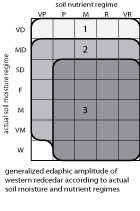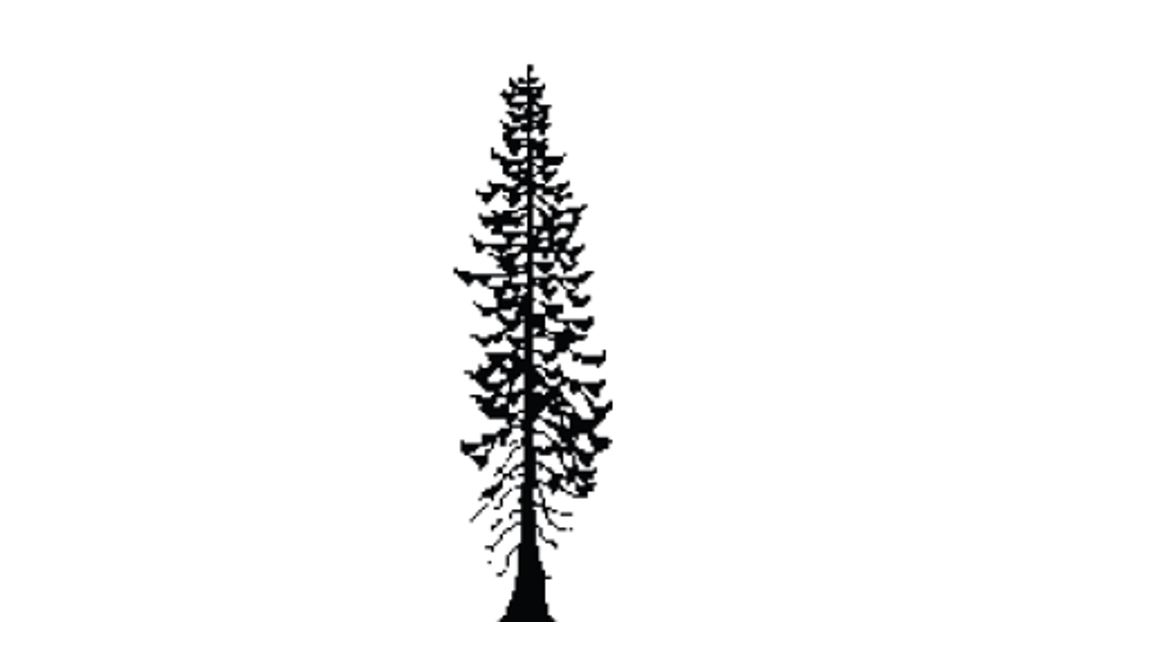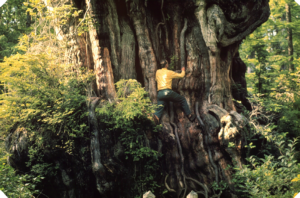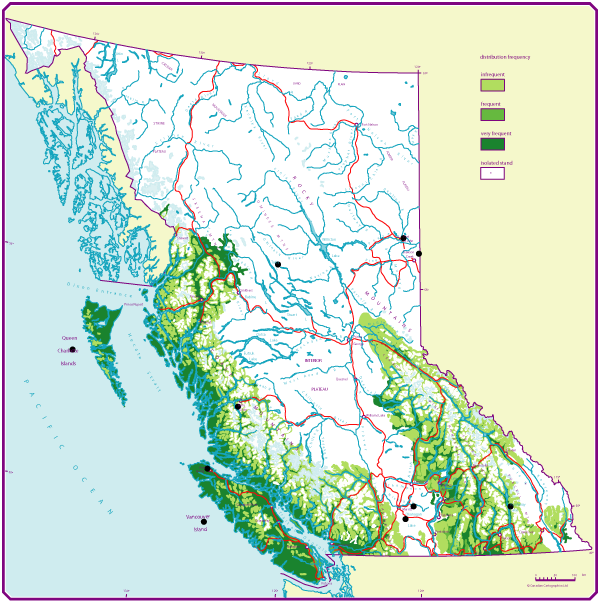Western redcedar
On this page
Geographic range and ecological amplitudes
Description
Western redcedar is a medium- to large-sized (rarely >60 m tall), evergreen, scale-leaved conifer, at maturity often with a forked (candelabra-like) top, a tapered fluted base, drooping branches, and thin, fibrous, brown bark. It is one of the most valuable conifers owing to the unique colour, texture, and durability of its wood; it is also the provincial tree of B.C.
Geographic range
Geographic element:
Western North American/mainly Pacific and less Cordilleran
Distribution in Western North America:
(north), central, and (south) in the Pacific region; central in the Cordilleran region
Ecological amplitudes
Climatic amplitude:
(subalpine boreal) - cool temperate - cool mesothermal
Orographic amplitude:
submontane - montane - (subalpine)
Occurrence in biogeoclimatic zones:
(lower MH), (lower ESSF), (SBS), (MS), (PP), IDF, ICH, CDF, CWH
Edaphic amplitude

Range of soil moisture regimes:
(very dry) - moderately dry - slightly dry - fresh - moist - very moist - wet
Range of soil nutrient regimes:
very poor - poor - medium - rich - very rich
On the basis of sand culture experiments and field observations, Krajina (1969) and Krajina et al. (1973) concluded that western redcedar requires nitrate-N for its growth and cannot tolerate the complete replacement of nitrates by ammonium compounds. In this respect redcedar differs greatly from western hemlock, which tolerates the ammonium source of nitrogen.
Western redcedar was killed by ammonium, with the exception of one seedling (out of ten) which survived but showed evident N-deficiency. In contrast, all western hemlock seedlings treated with ammonium for two years were growing well, however those treated with complete Hoagland solution were growing better. In sand cultures, with a solution of only nitrates, all redcedars grew only slightly slower than those treated with complete Hoagland solution.
Western redcedar is able to survive and grow, though less vigorously, in soils with a low moisture and nutrient content. In fact, this species occurs on such soils over much of its natural range. However, common douglas tolerates poor soils somewhat better than redcedar
Tolerances and damaging agents
Root system characteristics
In freely drained soils western redcedar develops a dense, profuse root system, with non-existent or poorly defined taproots. Fine roots form a very dense mat in the surface organic layer. Roots are mycorrhizal of the vesicular-arbuscular type.
| Tolerance to | Tolerance class | Comments |
|---|---|---|
| low light | H | comparable to Pacific silver fir |
| frost | L - M | low in coastal populations, medium in interior populations |
| heat | M | protection-requiring on warm and dry sites |
| water deficit | M | protection-requiring on dry and warm sites |
| water surplus | H | tolerates flooding, high water table, and strongly fluctuating water table well |
| nutrient (mainly N) deficiency | H | frequent on very poor sites; intolerant of salt spray and saline soils (for example, tidal flats) |
| Damaging agent | Resistance class | Comments |
|---|---|---|
| snow | L - M | low in coastal populations, medium in interior populations |
| wind | M |
| risk class | ||
|---|---|---|
| fire | L - H | wildfires are rare in wet cool mesothermal climates but very frequent in dry cool temperate climates |
| insect | L | not a major concern; western hemlock looper, phantom hemlock looper |
| fungi | H | major concern in trees that regenerated vegetatively or were damaged |
| other agents | H | browsing by deer and elk at the seedling and sapling stage |
Associated tree species and successional role
In British Columbia, western redcedar grows in uneven-aged, mixed-species stands, less frequently in pure, even-aged stands. It is present in early, mid-, and late stages of secondary succession; a major component in old-growth stands in the IDF, ICH, CDF, and CWH zones.
| Associated tree species |
Occurance class | Major area of occurance |
|---|---|---|
| common douglas | H | one of the major associates in cool temperate and mesothermal climates |
| western hemlock | H | one of the major associates in ICH and CWH |
| red alder | M | mainly on floodplains |
| western larch | M | southern ICH and IDF |
| sitka spruce | M | mainly in hypermaritime CWH |
| black cottonwood | M | floodplains |
| pacific silver fir | L | wetter CWH |
| grand fir | L | southern ICH and CWH |
| subalpine fir | L | mainly in ICH |
| paper birch | L | mainly in ICH |
| alaska yellow-cedar | L | upper and hypermaritime CWH |
| lodgepole pine | L | mainly in hypermaritime CWH |
Genetics and notes
Genetics
Western redcedar seems to vary less than many other tree species; however, some differences in the chemical properties were recently detected between coastal and interior populations.
Notes
Similar to Alaska yellow-cedar, western redcedar is one of the most valuable tree species of British Columbia when considering its ecological, silvical, and timber values. It could be also considered a nurse species as its foliage improves decomposition of forest floor materials. More detailed silvics information is given by:
Minore, D. 1990. Thuja plicata. Pp. 590-600 in R.M. Burns and B.H. Honkala (technical coordinators) Silvics of North America, Vol. 1. Agri. Handbook 654, USDA For. Serv., Washington, D.C.
Minore, D. 1983. Western redcedar: a literature review. GTR-PNW-150, USDA For. Serv., Pacific Northwest Forest and Range Exp. Station, Portland, Oregon. 70 pp.
Smith, N.J. (editor) 1988. Western red cedar — does it have a future? Faculty of Forestry, University of British Columbia, Vancouver, B.C. 177 pp.

This is the general shape and outline of the western redcedar.

Western redcedar is one of the most valuable tree species of B.C., considering its ecological, silvical, timber, and cultural values. This picture shows an extraordinary western redcedar tree in the coastal rain forest.

